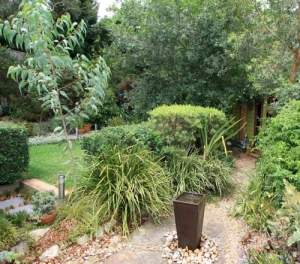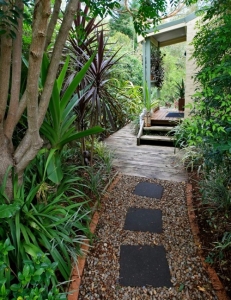Funny old thing sustainability. Of late it’s become a buzzword but for many switched-on gardeners sustainable practices have always just been, well, sensible practices. Personally I describe myself as a pragmatic-suburban-sustainable gardener (and homeowner). I’m not some starry-eyed ideologue; I look at what’s practical, financially viable and provides the outcomes I need.
As a professional I believe sustainability has become a very confusing area for many home–gardeners primarily because, just like the word ‘organic’, sustainable has been hijacked, bushwhacked and generally abused by marketers, advertisers and PR companies.
With all the claims that are made by individual products or companies about their sustainability let’s get down to the core of what sustainability is. To be honest sustainability is a wee bit hard to define in a single punchy catch-phrase, as much as marketers would like to have you believe otherwise. That’s because sustainability is both an action and an outcome – it’s a single step and an entire journey, and it can be applied in part or you can choose to work towards the nirvana of total sustainability. Whichever degree of sustainability you choose there’s one thing you’ll find; sustainable actions quickly start to self-connect and become synergetic with an outcome greater than their individual weight.

A sustainable garden has trees, permeable surfaces, diverse planting and some terracing to catch & hold surface runoff
So my perhaps longwinded definition of sustainable and sustainability is this –
to make the best use of the minimum of appropriate available resources in a manner than encourages replenishment, not depletion, while achieving the best and healthiest outcomes for the consumer or garden-user and the environment.
Sustainability is about balance. It’s like a ledger, balancing the inputs with the outputs, the negatives with the positives. So for example a sustainable landscape requires little, if any, additional irrigation and has very low levels of run-off or at least has non-damaging run-off, after rainfall. So how would you achieve this?
Our suburban obsession with water has traditionally been to get as much of it away as quickly as possible, so we send it elsewhere and make it somebody else’s problem and then we stand there wondering why our suburban landscapes are so dry… go figure.
So, first, reduce slope or, in the old parlance, terrace the lawn or the garden to slow water down. The more slowly water moves, the more chance it has to soak in and be used by plants and stored in the soil. Deep soil-water encourages plants to become more deep-rooted therefore increasing their ability to survive in dry times. There’s an example of that synergy I mentioned.

A gravel path with stepping stones lets water soak into the ground below
Second, reduce hard surfaces, as these encourage any excess of ‘waste’ water to be delivered to another area as quickly as possible – that’s the perfect formula for erosion. Consider using gravel paths or elevated boardwalks for example.
Third, disperse water evenly. You can do this by running a gravel path across a slope rather than down it or, if you must drain runoff from a paved area to somewhere, run it into a dispersion system of slotted drainage lines or a network of dispersal trenches. Sure it’s some hard-yakka at the front-end setting it up but the long-term benefits are well worth it.
Fourth and finally mulch. Mulch is your friend. It slows water, it retains water by cutting back evaporation and insulating soil and it breaks down, adding nutrients and organic matter to the soil. There’s that synergy again…
So, next time you think about sustainability, don’t let it overwhelm you.
Just think of it as neat little bite-sized chunks and before you know it you’ll be making a meal of it – a very sustainable meal that is.
